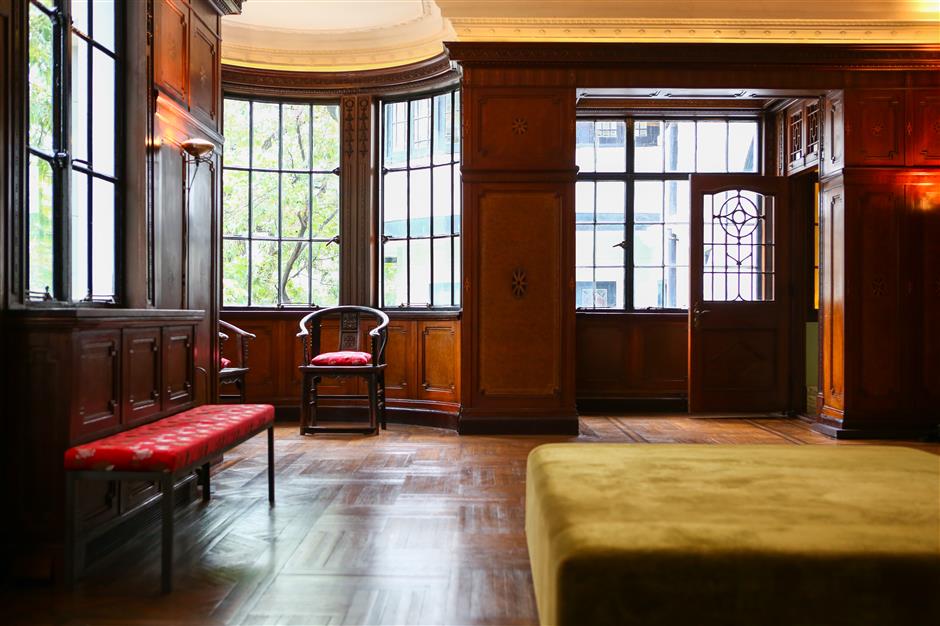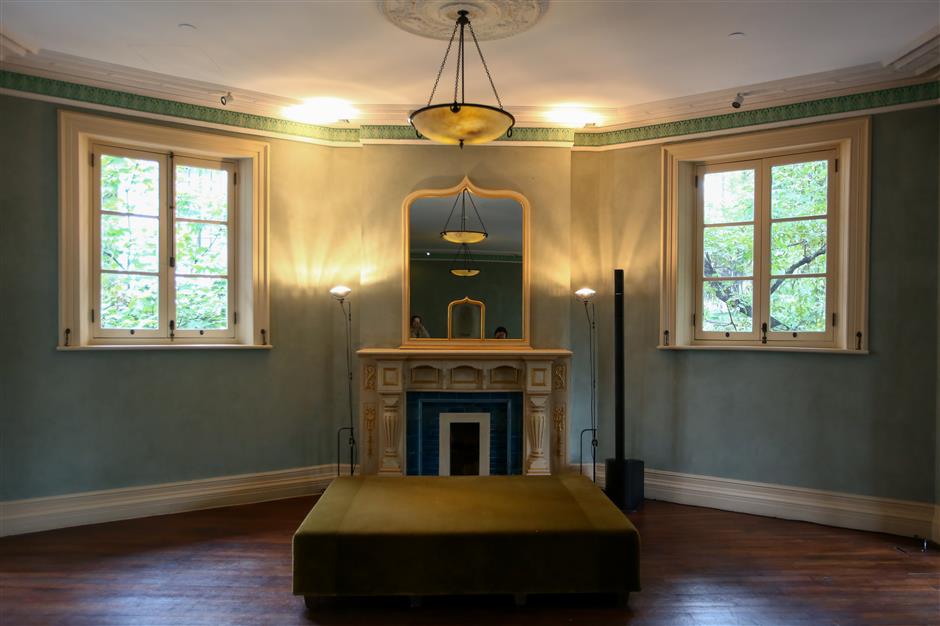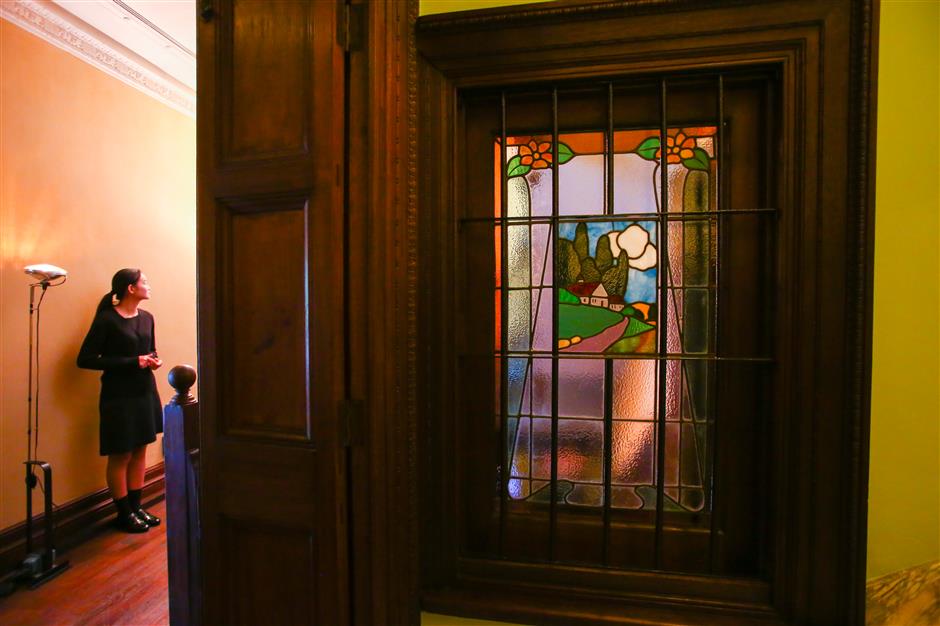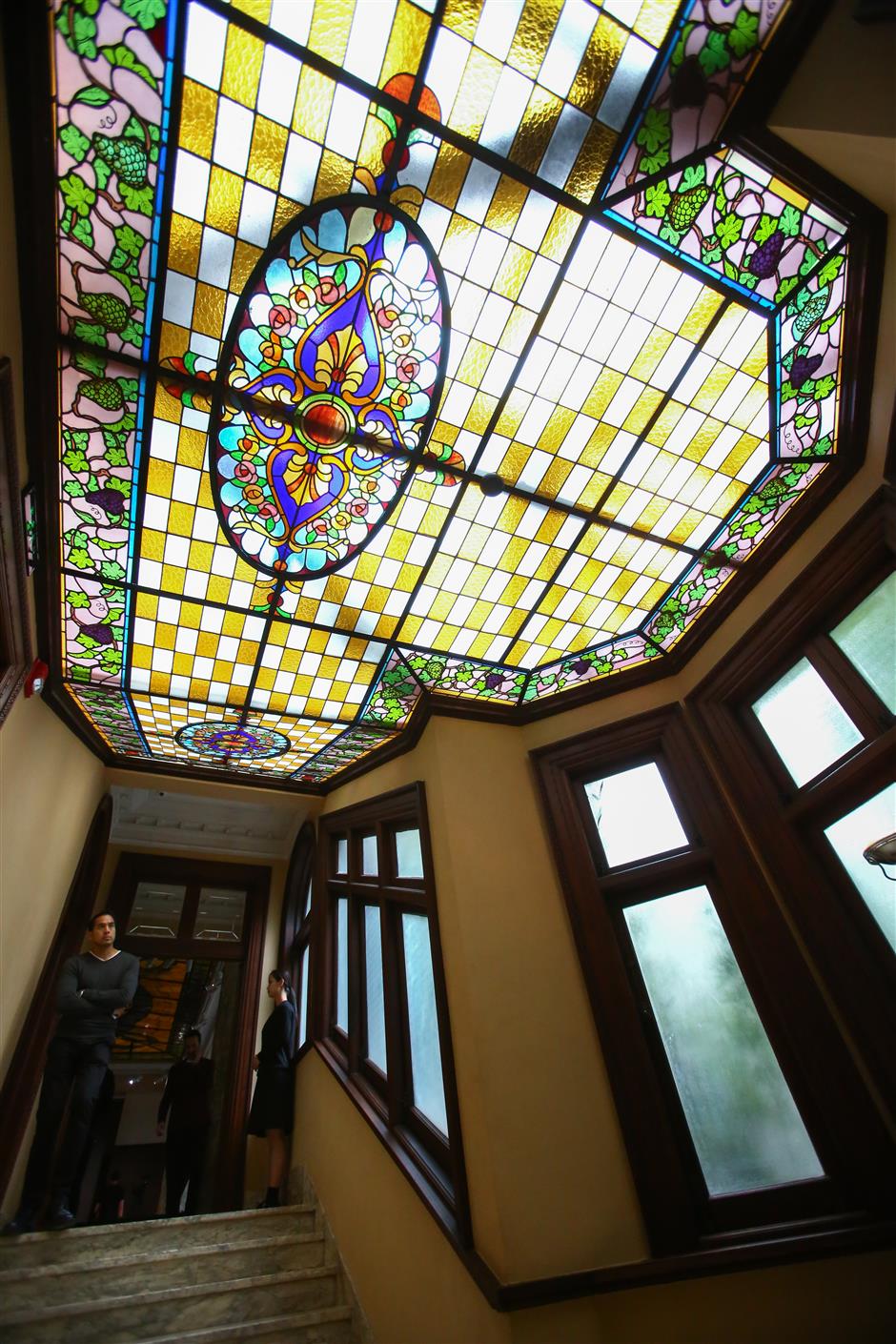Historic downtown villa opens to the public

The Rong Villa returns to its former glory after a six-year renovation highlighted by stunning staircases, a stained-glass skylight and well-appointed furnishings.

A historic downtown villa, open to the public for the first time in nearly a century, has drawn long queues of people waiting for the chance to get in and explore an icon of local heritage.
The three-story Rong Villa at 186 Shaanxi Road N. is the former residence of Rong Zongjing (1873-1938), an industrial tycoon from Wuxi of Shanghai’s neighboring Jiangsu Province who built a commercial empire in China. The site underwent restoration work for six years before finally being opened for public viewing.
Rong and his younger brother Rong Desheng became magnates in flour and textiles. His nephew Rong Yiren, who served as vice president of China from 1993-98, founded the China International Trust & Investment Corp in 1979 and became known as the “Red Capitalist.”
Rong Zongjing bought the Shanghai grand garden villa from a German in 1918. Its classic Beaux Arts-style facade has been maintained, while the interior decor by Eclectic & Art Deco Styles retains traditional Chinese elements.
The family patriarch left Shanghai in 1938 after refusing to cooperate with Japanese occupation forces. Within a month of relocating to Hong Kong, he died of illness.
Over the years, the villa has changed occupancy several times, housing the China Economic Research Institute and then as the offices of media tycoon Rupert Murdoch. In 2011, the Italian luxury brand Prada took over tenancy.
The Jing’an District government sought help from the business sector to preserve the historic building, and Prada stepped to the fore, citing its experiences in restoring old buildings in Italy.
“It’s a grand villa of about 2,000 square meters,” said Prada Chief Executive Patrizio Bertelli. “It’s a rare site and has a big garden area.”
Yes, it pays to have a group like Prada, with its deep pockets, as a partner in such a project. Concerns were initially raised that the renovated site would be reserved only for prominent guests and would be commercialized as a promotional venue for Prada products.
“Of course, we will promote our own products here, with events like fashion shows,” Bertelli said. “But we also will stage public activities and exhibitions. Young people should be given access to history and art.”
Designer Michael Rock, a member of the restoration team, said that the project went beyond simply copying the past.
“We added some new meaning to it,” he said. “We have to understand it in a deep way and make it a global hybrid.”
Zheng Shiling, a history and architectural expert, praised the result.
“It’s rare that a historic building is used by one single company,” he said. “Usually, such buildings are subdivided for use by multiple companies, which is bad in terms of historical preservation. It is necessary to open this site to the general public. Prada is doing it the right way.”
Zheng estimated that the cost of the project to Prada ran into the hundreds of millions of yuan. No figures have been made public.

Italian craftsmen helped repair broken pieces of stained glass and restore missing ones authentically

Prada spent three years on research, including collecting ideas on how to combine its corporate culture with the history of the villa and the Rong family. Great efforts were made to find original documents and construction materials.
During the work, a secret family safety box was found under paneling.
“These are elements of life as it was, and we want them preserved,” cultural official Qian Wei said.
Craftsmen from China and Italy worked together to give the historic villa a new lease on life.
“Generally, interior decor like glass, lighting and wall embellishments are preserved,” said Zheng, who is also a Tongji University professor. “But it doesn’t mean it was an easy job to renovate. The villa was given the top protection status by the city, which requires no change in decor at all.”
Architect Robert Baciocchi, who oversaw the restoration, said the search for original construction materials was time-consuming.
“We had to ask skilled Italian craftsmen to repair some of the broken pieces and even make new ones in the old way,” he said.
The highlight of the ballroom is a 45-square-meter stained-glass skylight, comprising 69 glass panels. It features Art Deco lines and typical Greek ornamental laurel wreaths. The skylight was severely damaged over the years. Broken and missing pieces were replaced with vintage glass made in Germany in 1940.
When restoring a bedroom with enamel tiles instead of wooden panels on the walls, Italian craftsmen replicated old, traditional skills to make new ones in the same pattern.
The restoration has won plaudits from the current generation of the Rong family.
John Yung, great grandson of Rong Zongjing, said, “I’ve heard that many big names and celebrities used to gather at our house, often attending parties held in the ballroom. I can feel those old glory days now.”
The restored villa will be open to the public Tuesdays through Saturdays until December 17. Inside, an exhibition details how the restoration was done.
To visit, reservations are required through Prada’s official WeChat account: a pradawechat.fortytwo.com.cn/Events/20170920/pc_cn.html.
















